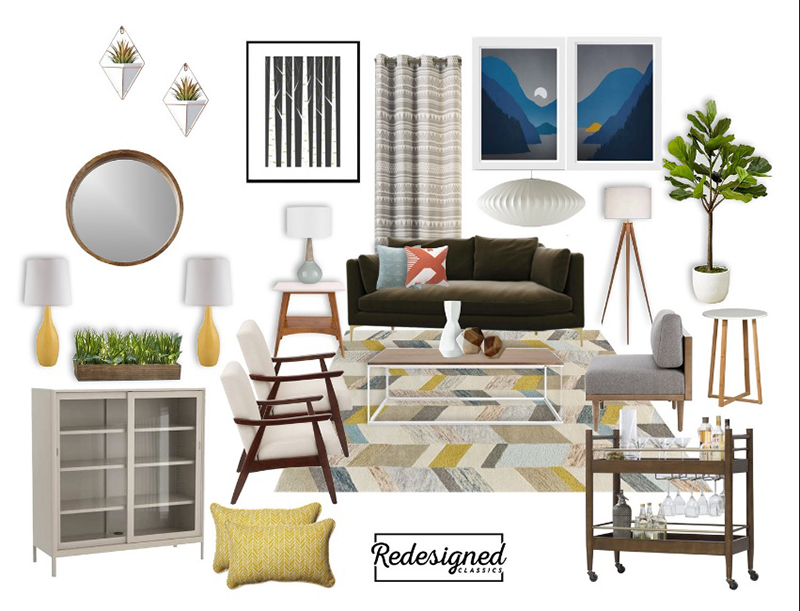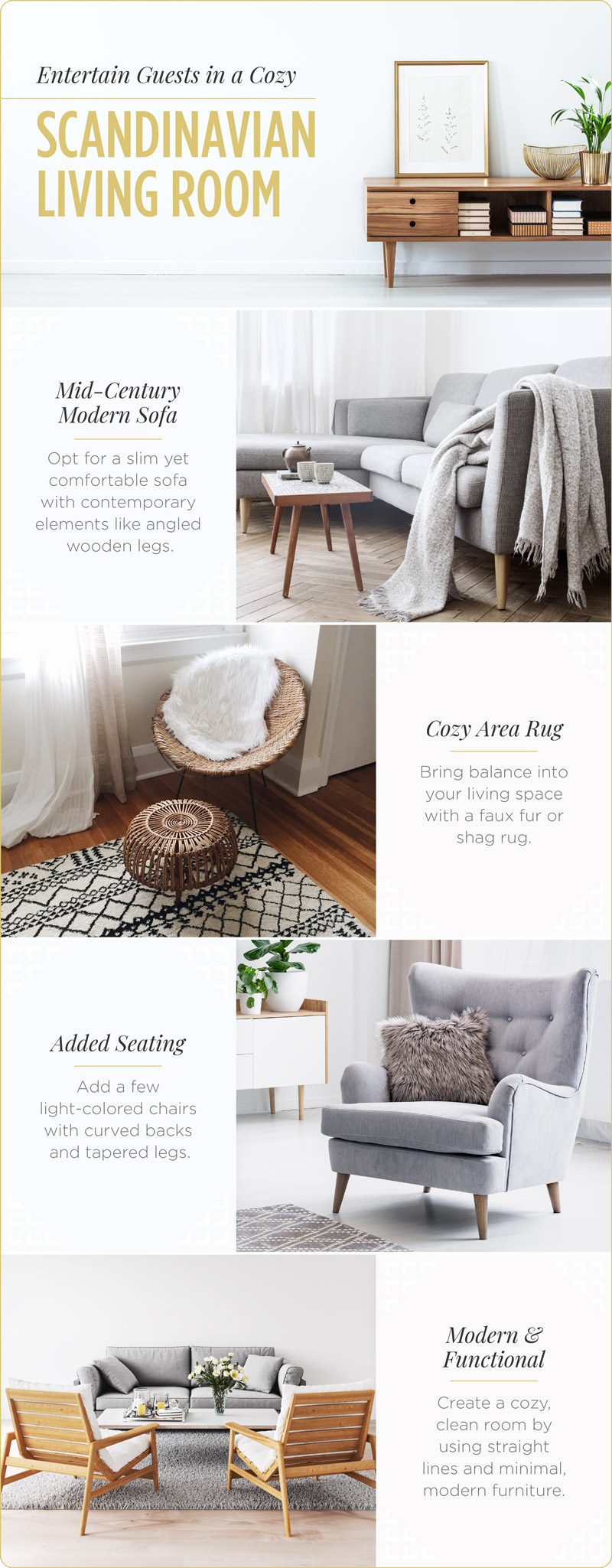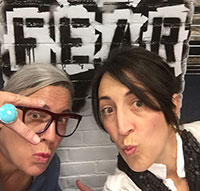Creating a Scandinavian-inspired mood board is a great way to begin planning your next interior décor project. Utilizing natural materials and neutral colors is key when it comes to portraying the perfect Scandinavian look. This guide provides tips on how to put together an effective mood board that will help you brainstorm ideas for your upcoming project, such as assessing furniture design, color schemes, texture, lighting and more. With this helpful resource, you can bring the chic yet cozy characteristics of Scandinavian decor into your home.
But what exactly is a Scandinavian mood board, and how do you go about creating one? In this article with Impeccable Nest, we’ll take a deep dive into the world of Scandinavian design and show you how to create a mood board that perfectly captures the essence of this beloved aesthetic. So grab a cup of tea, get cozy, and let’s get started!

Understanding Scandinavian Design Aesthetics for Crafting a Mood Board
Scandinavian design aesthetics can be used to establish an eye-catching and sophisticated mood board. This type of design is known for its clean, timeless lines and a focus on nature-inspired elements. By mastering the distinctive look of Scandinavian style, you can craft a mood board that is stylish yet cosy and inviting.
When it comes to achieving a classic Scandinavian look, clean lines are paramount. Minimal furniture with sleek silhouettes creates the perfect base for adding in decorative touches such as blankets, throws, rugs and cushions. Adding layers of texture to a room further enhances the feeling of comfort and coziness which is signature of Nordic design.
Using furniture pieces made from natural materials create an inviting atmosphere while introducing natural elements into the home. Bamboo or rattan chairs and tables add warmth without compromising on simplicity or modernity. Woven textiles bring another layer of texture to furniture pieces or even walls by creating a sense of continuity throughout the space.
In terms of color choice, light pastel shades contribute to the light breezy feel so characteristic of Scandinavian homes. Creams, greys and whites are staples when using this type of aesthetic while pastel blues and pinks add in some extra whimsy. Natural colors such as browns, greens and terracotta also work well when used sparingly as accents against lighter hues to create contrast and depth within the space.
Gathering images reflecting these principles is essential for crafting your mood board correctly. Look for pictures that make use of earthy colors, natural textures and minimalist furnishings in order to curate all necessary components for establishing a calming Scandinavian atmosphere in your home. Once you’ve successfully captured all these objectives onto your visualization board, you will be well on your way to enjoy Scandinavian elegance within your own abode!

Building with Neutral Colors to Achieve the Perfect Balance of Light and Dark
Neutral colors are a great way to achieve the perfect balance of light and dark in a building. Neutral tones help keep your space looking harmonious and balanced, without overwhelming it with too much color or clashing shades. Achieving this balance is key in creating an inviting and stylish atmosphere in any home, office, or other interior space.
When selecting neutral tones for a building, it’s important to choose wisely. Not all neutrals are created equal – some will add warmth, brightness, and intensity; others are more airy and subdued. For example, taupe has both earthy and light tones that can create quiet elegance; cream has soft light tones that comport nicely with brighter colors; and beige blends into woodsy hues for cozy vibes throughout the room.
Aside from choosing the right hues, also consider how you’ll incorporate materials into your building design. Opting for natural fibers such as wool, cotton, jute and hemp can deliver endless options for livening up your décor in subtle yet impactful ways. If a modern feel is desired, then glass may be used to introduce lighter elements while metal brackets can provide added strength to otherwise lightweight furniture pieces. You could even mix decorative accents such as throw pillows or rugs using neutrals mixed with bold pops of color to inject life into your space while still adhering to the overall minimalistic aesthetic.
Using neutral colors designing or decorating a building is often thought of as synonymous with plainness –– but on the contrary Incorporating several different of neutrals can create-of-a- looks that allow form function to coexist in peaceful harmony while perfectly marrying darkness and light in interesting ways. With so many options available today, there’s no excuse not to make use of neutral tones when seeking the ideal balance between bright and dark for any interior design project.
Incorporating Natural Materials into Your Creative Vision
Incorporating natural materials into your creative vision can add tremendous beauty, texture and interest to a piece or space. Whether it be indoors or outdoors, nature provides us with an endless supply of raw materials if we take the time to be observant. Natural materials also provide us with sustainable resources for our creative projects.
Choosing natural materials for our work adds a feeling of connectedness and provides an opportunity to learn more about our environment. From wood and bark to stones, feathers, leaves and more – they all contain stories that speak to the wonder of nature. When used in artwork or decorating, these treasures become part of the story within the piece itself.
Resources are everywhere; there may be native plants on your property that could be suitable use in a sculpture, artwork or planter box. There are also many items available from stores, like branches for tablescaping or moss for weaving into wall art. One great resource is beach walks; scour beaches you visit for interesting shells, driftwood pieces and even pebbles that can turn your creative visions into reality. In addition, don’t forget trees! Clipping small bits off larger trees (while taking precautions not to hurt them) can yield beautiful softfall pieces such as bird nests and more.
Incorporating natural materials into your creative works speaks volumes about your respect the environment and its resources. Because most found material has already been exposed to the elements, certain finished products have a unique character that evokes imagery of untouched landscaped areas –something many seek when trying to achieve tranquil atmospheres in their homes or workspaces. By engaging nature’s bounty as part of your artistic expression, so much more beauty emerges naturally.
Exploring Traditionalology to Inform Your Mood Design
Exploring Traditionalology to Inform Your Mood Design is a process of finding inspiration in traditional culture and objects to create a mood board around creating your own interior design. By looking at past images, furniture, architecture, art and artifacts, you can learn how they were used in the context of their respective cultures so that you can incorporate this knowledge into your own design projects. You might be inspired by a certain color or texture found within an object or image or even the story behind its creation which can help to inform your own choice of colors, textures and shapes when designing.
This is especially beneficial when trying to create something new as it helps us break away from many preconceived ideas surrounding design. It allows us to look at things from a different perspective and develop our own style by exploring something completely unique as opposed to simply imitating popular trends. This also extends to utilizing materials native to the region where possible – understanding what works best for a particular location will make all the difference between an impressive scheme and an uninspiring one.
Understanding traditionalology also provides insight into symbolism, regional dialects and rituals as well as its history which can provide additional meaning or motifs when incorporating elements into modern designs. Whether it’s reusing ancient materials that have special significance to people in the area or taking inspiration from local customs such as fabric weave patterns; these touches bring life and identity to any project working with traditional methods and recipes.
Overall, exploring Traditionalology for your mood design gives richness and depth that no other method could truly match allowing for beautiful unique interiors with character coming from their cultural roots!
rounding with Inspiration: Putting All Together for an Effective Mood Board
A mood board is a visual representation of the creative vision for a project, event, or campaign. It’s an inspiring and powerful tool that allows teams to see the big picture of their creative direction from the very beginning. But creating an effective mood board can be a tricky task. How do you ensure all the elements come together harmoniously for successful results? The key is figuring out how to round it off by making sure every element is working in sync with each other.
Start by brainstorming ideas and collecting materials that represent your theme or idea. Gather paintings, photographs, fabric samples, magazine clippings, fonts—basically anything that inspires you! Then down your selection until youve got just a few key pieces that will make up your final collage. Layout these pieces on the board; this part consists primarily of trial-and-error experimentation as you move images around to complete the overall look and feel.
Rounding off is all about perfecting those fine details and ensuring everything works together as one cohesive unit. Look through piece carefully and assess if are any adjustments needed to complement the overall design better. Perhaps adding splashes of colour here-and-there to give it more vibrancy? Maybe tone down certain elements for balance? These little changes will go a long way towards giving your mood board its desired effect.
In addition to adjusting visual elements, mixing up the font styles used throughout can also help tie everything together. Choose neat yet classy text styling so it stands out without drawing too much attention away from other components found on the board. Consider using bold typefaces or changing colours to evoke different emotions when readers look at your words.
Lastly, finish things off by selecting decent background material that ties into your concept but isn’t intrusive in doing so — think simple textures such as linen or burlap cloths interwoven with subtle patterns which enhance rather than draw attention away from main visuals featured within your mood board collage itself.
In conclusion, hard work certainly goes into completing a well-rounded mood board; but gone through the whole process put teams in good stead towards realising their creative visions!
Conclusion
Brainstorming ideas for a Scandinavian-inspired project is easy when you focus on using natural materials and neutrals in creating a mood board. Using these simple yet effective elements will help to evoke the modern, sophisticated inspiration from this classic style of design. Utilizing basic color palettes, textures and hues, you can create a mood board that serves as an inspirational foundation for your final product. It will keep you focused on the look, feel and desired outcome of your project while also establishing balance and symmetry throughout. By combining an understanding of natural materials with neutral tones, you are sure to create the perfect Scandinavian-inspired mood board with ease while maintaining great success in the final result.
Excerpt
Creating a Scandinavian-inspired mood board is a great way to jumpstart your creative process. Utilize natural materials like wood, stone and metal, then combine with calming neutrals as your base colors. To create an organized display of ideas, add magazine cut outs or printed photos to provide visuals for design inspiration.

We’re Emma Carole Paradis and Kimberly Carole, the owners and designers of Impeccable Nest, based in Bedford, New Hampshire. A mother-daughter team with a love of design. Originally from Manhattan Beach, California, now based in Bedford, New Hampshire, we bring a Southern California cool and New England tradition to our design. Not only do we work together…we also live together in a multi-generational home…and a home that they are known to design for others.
